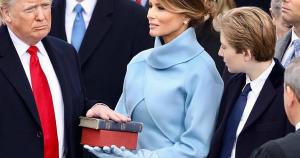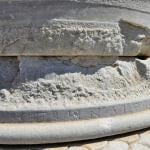 What is the state of the race?
What is the state of the race?
We have an incumbent president slowly moving up to (almost) 44% approval in a time of relative peace and prosperity. That approval rating is too low and not historically good news for the incumbent. Simultaneously his disapproval rate has dropped (barely) below 52%.* This has been roughly the case since Mr. Trump declared his intention to run for re-election.
These early polls are hard to interpret and this time there are several complicating factors different from past Presidential races and recent (very accurate) polling for races like Congressional runs:
- The President is very controversial in an era where polarization between parties is as great as any time in my fifty-six years.
- Supporters of the President contain voters unhappy with some of his behavior and rhetoric, but in favor of most of the outcomes. Opponents of the President believe him to be morally unfit for office and guilty or close to guilty of crimes against humanity.
- Most media oppose the President in ways that are both fair and unfair.
- The main opposition party has moved to the left of President Obama’s administration.
- The President has raised a huge amount of money and (mostly) united his party.
- The race will about Mr. Trump and the relative fitness of the Democratic nominee.
In the last election, then candidate Trump was personally very unpopular, but won with forty six percent of the vote in just the right states to win a convincing victory in the only race that counts: the electoral college.
My assumption is that the President almost surely will be re-elected if his job approval is 45% and his disapproval is less than 52%.
In these early days, watch the aggregate disapproval number (many polls) for “under or over 52.”
Why?
Here is my argument:
- Some people who dislike the President will vote for him, but this number is not large (no more than 4%).
- Almost nobody who now approves of the job the President is doing will not vote for him. This means that at present the President would get at least 45% of the vote.
- The next Democratic nominee will be to the left of President Obama and will not be able to secure a majority of the popular vote. However, the floor against the President is probably 48%.
- The popular margin in the last race came from California and very Democratic states. Running up the margin even more there and in New York will not help the nominee of the Democratic Party win.
- If President Trump gets 48% of the vote, he will almost surely win as his vote is more widely distributed. (He will win Texas, but with a smaller margin as Ted Cruz did.)
Therefore: the incumbent flush with cash needs to persuade just over 3% of the people who disapprove of him to vote for him at present. I think this is not easy, but likely.
As a result, if present trends continue, the President will be re-elected. I predict he would come closer but lose the popular vote, so be re-elected with a similar electoral college victory. In 2008, I predicted that “celebrity” would trump other qualifications and that if he ran, Mr. Trump would be a formidable candidate. In 2012, I made the mistake of thinking his high personal negatives would keep him from winning. I have tried to build on the initial insight (Trump is now the greatest celebrity in America) and correct my error (a celebrity need not be liked).
Here is my call as of today (much will change!): The President starts with 270 Electoral votes likely. Why? I think Florida is trending red. Arizona is trending to become a toss up state in future elections, but is still a Republican state for 2020. Wisconsin is trending red and the President will win. That’s all he needs.
Bias alert: I am personally a Garfield Republican. I have tried not to let my own politics impact this analysis.
————————————————-
I am using the RealClear numbers here on July 2, 2019.












